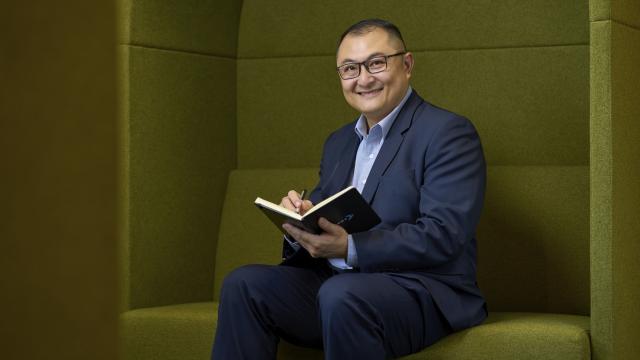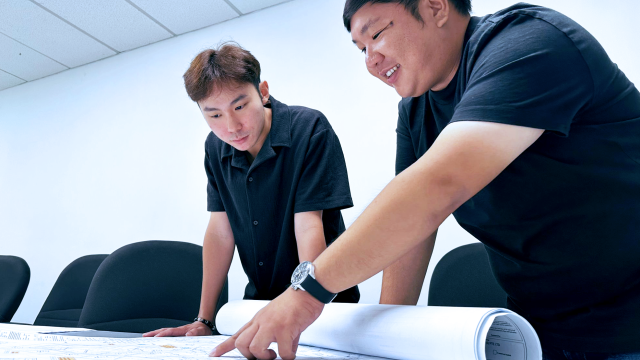Does music have the power to heal the mind and body? Whether you have experienced sound therapy or not, it is not hard to believe that soothing music or sounds have a positive impact on our well-being. Last year, Assistant Professor Peter Tay collaborated with The TENG Company for a study on the psychological and physiological effects of binaural beats.
- Innovative sound therapy incorporating binaural beats in Chinese instrumental music
- Potential use of binaural beats in relieving anxiety
- First collaboration between SIT faculty and an arts group in a research study
What Inspired the Study
At the height of the COVID-19 pandemic, co-founder and creative director of The TENG Company, Dr Samuel Wong noticed that the lockdown was creating an inordinate amount of stress and anxiety for many people. This inspired him to think about how music and sounds could help people, especially the vulnerable, to cope with the pressures of life. He wanted to test the effect of soundscapes that featured binaural beats incorporated in Chinese instrumental music or Asian-inspired compositions.
“As a musicologist, I have always been interested in sounds and binaural beats. As far as I know, this is the first time an arts group in Asia is incorporating binaural beats in compositions for sound therapy,” shared Dr Wong.
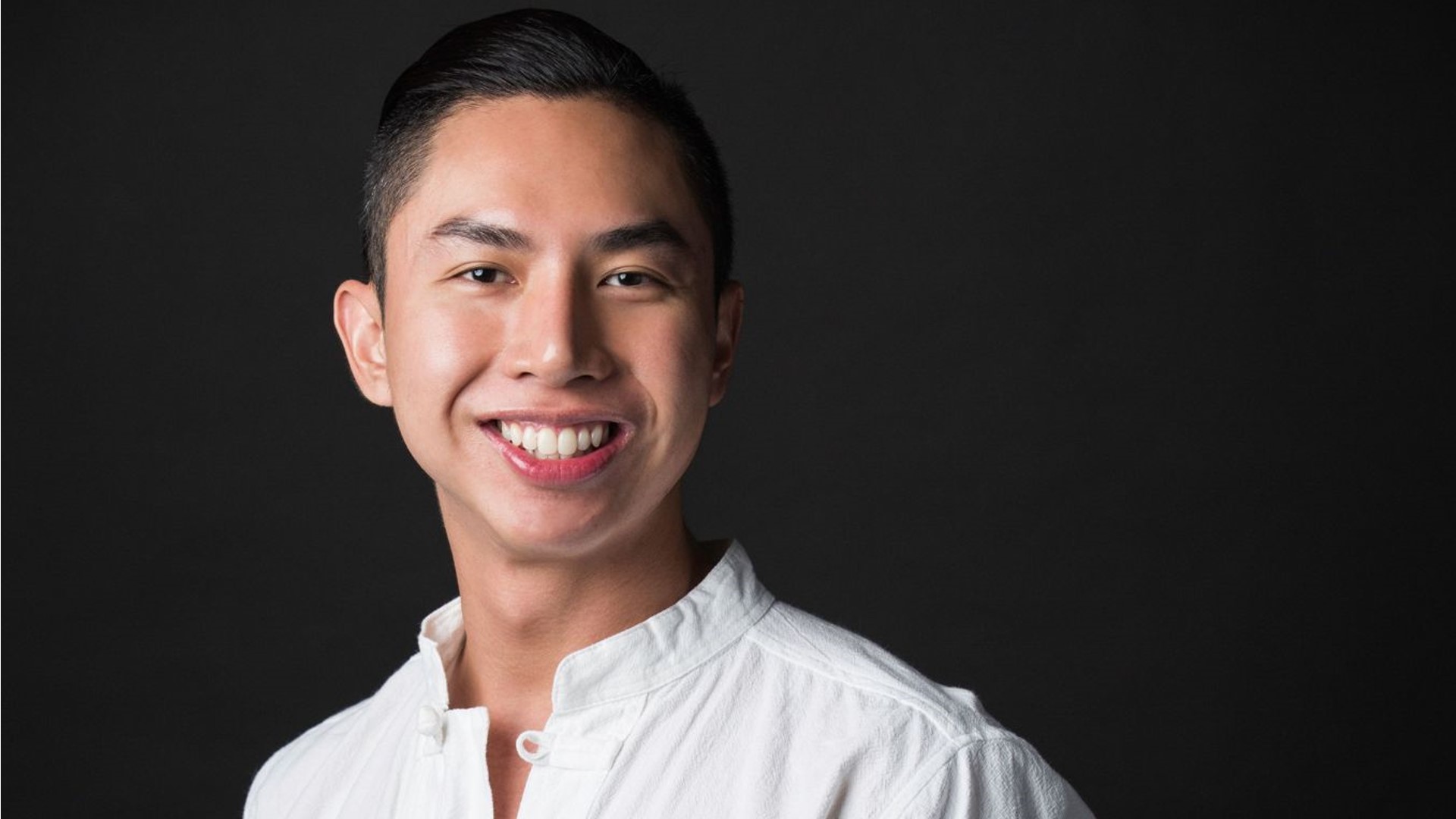
Dr Samuel Wong, co-founder and creative director of The TENG Company. (Photo: TENG Company)
What is Sound Therapy and Binaural Beats
Asst Prof Tay explained that sound therapy uses musical instruments or tools that produce sounds of specific frequencies for the purpose of improving mental wellness. Some therapists have used combinations of sounds from different instruments such as Tibetan singing bowls and gongs.
Binaural beats therapy is considered a form of sound therapy and is unique in that two tones of different frequencies are presented separately to each ear, but the brain perceives these tones as a single tone.
Dr Wong said, “We created a journey of tones (from theta to delta patterns) to achieve a very comfortable listening experience. I wanted the soundscapes to be suitable for very young listeners. After creating our prototypes – we created six soundscapes with a runtime of 30 minutes – I approached Asst Prof Tay because I wanted to work with an applied research psychologist on this project. At the end of the day, we did not want the prototypes to be musical per se but science-based and backed by research.”
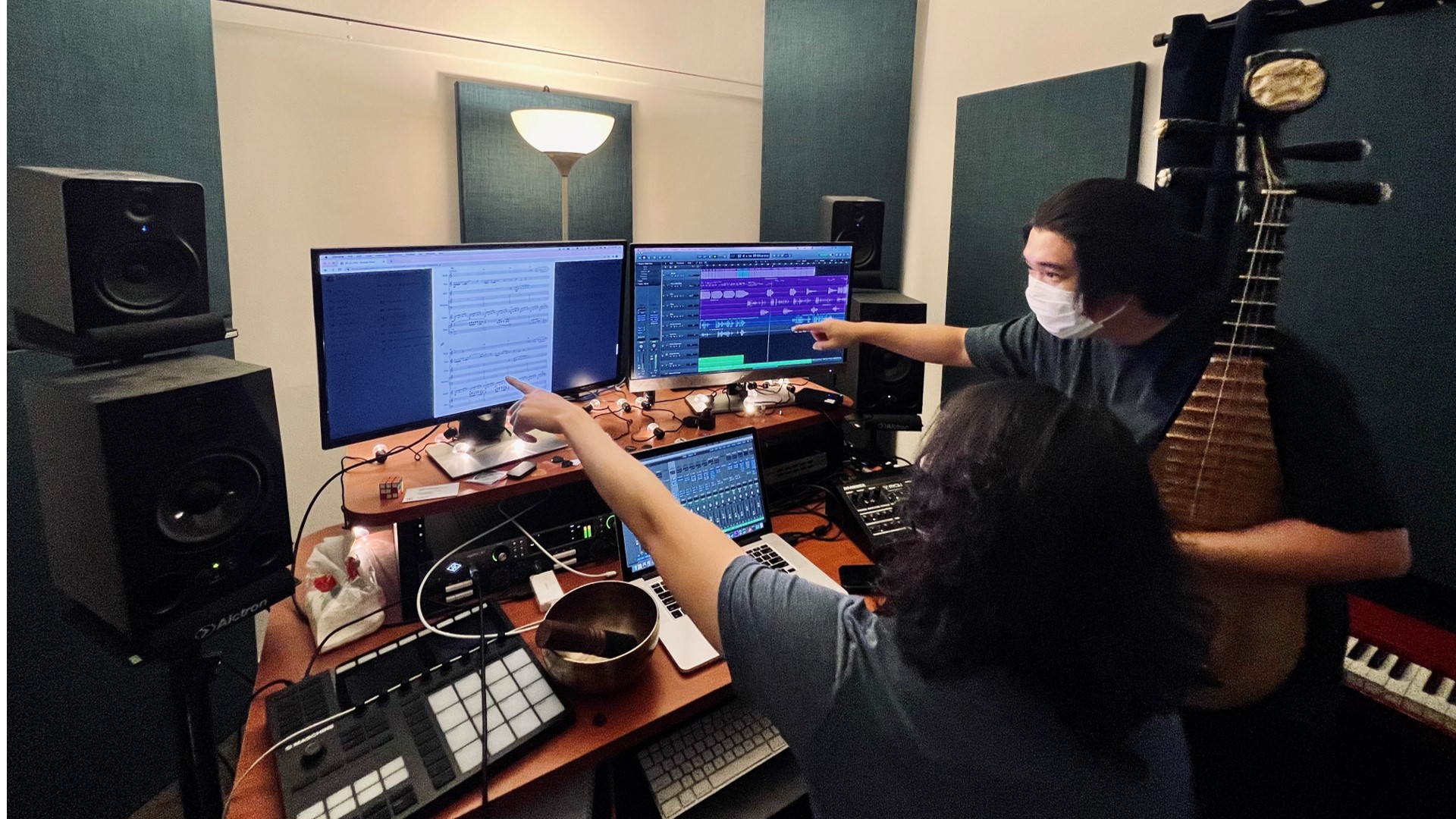
Musician and producer from The TENG Company working in the studio. (Photo: TENG Company)
Existing Studies on Binaural Beats
In the last decade, there have been studies that generally demonstrated support for binaural beats and their effectiveness in relieving stress. Asst Prof Tay said, “In one particular four-week study involving subjects in the military service, music embedded with binaural beats significantly reduced post-employment chronic stress in the subjects.”
Researchers have also found that binaural beats can enhance certain aspects of human cognition such as visuospatial working memory. However, Asst Prof Tay said that clinical applications for binaural beats should be investigated further and cannot completely replace traditional therapies for relieving stress.
Impact of TENG’s Binaural Beats
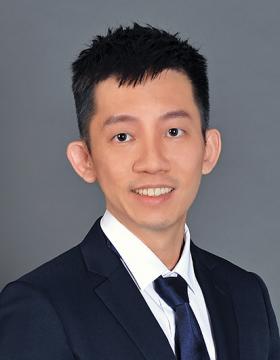
Asst Prof Tay (left) conducts experimental studies to examine cognition and the effectiveness of interventions for psychosocial well-being. Experiments that assess participant psychosocial well-being are methods relevant to the current study.
He said, “I wanted to work with The TENG Company on this study because I could see the potential of incorporating binaural beats as an adjuvant therapy for allied health professionals.”
In the study, 151 participants were randomised to three groups. One group listened to TENG’s music with binaural beats, another group listened to TENG’s music without binaural beats, and the third group listened to an audiobook. All participants complete a questionnaire to answer some socio-demographic and psychologic questions before and after listening. Among the 151 participants, 32 participants underwent physiological measurement.
“We found that participants who listened to TENG’s music with binaural beats reported lower state-anxiety compared to those who listened to the audiobook. Further analyses revealed that these observations may be specific to participants who reported the highest state anxiety at the beginning of the session,” said Asst Prof Tay.
Similarly for physiological measurement, Asst Prof Tay found increased arousal – as indicated by the tests on skin conductance and greater heart rate variability – was observed among high-state anxiety participants when they listened to TENG’s music with binaural beats. This pattern was also observed among participants who reported low positive affect before listening to the soundtracks. But one caveat was that the sample sizes for the physiological data were small.
Asst Prof Tay said, “Binaural beats have been used in some occupational therapy settings, but it is not widely used in Singapore. Based on our current research, we can conclude that binaural beats may be useful towards relieving anxiety in some populations.”
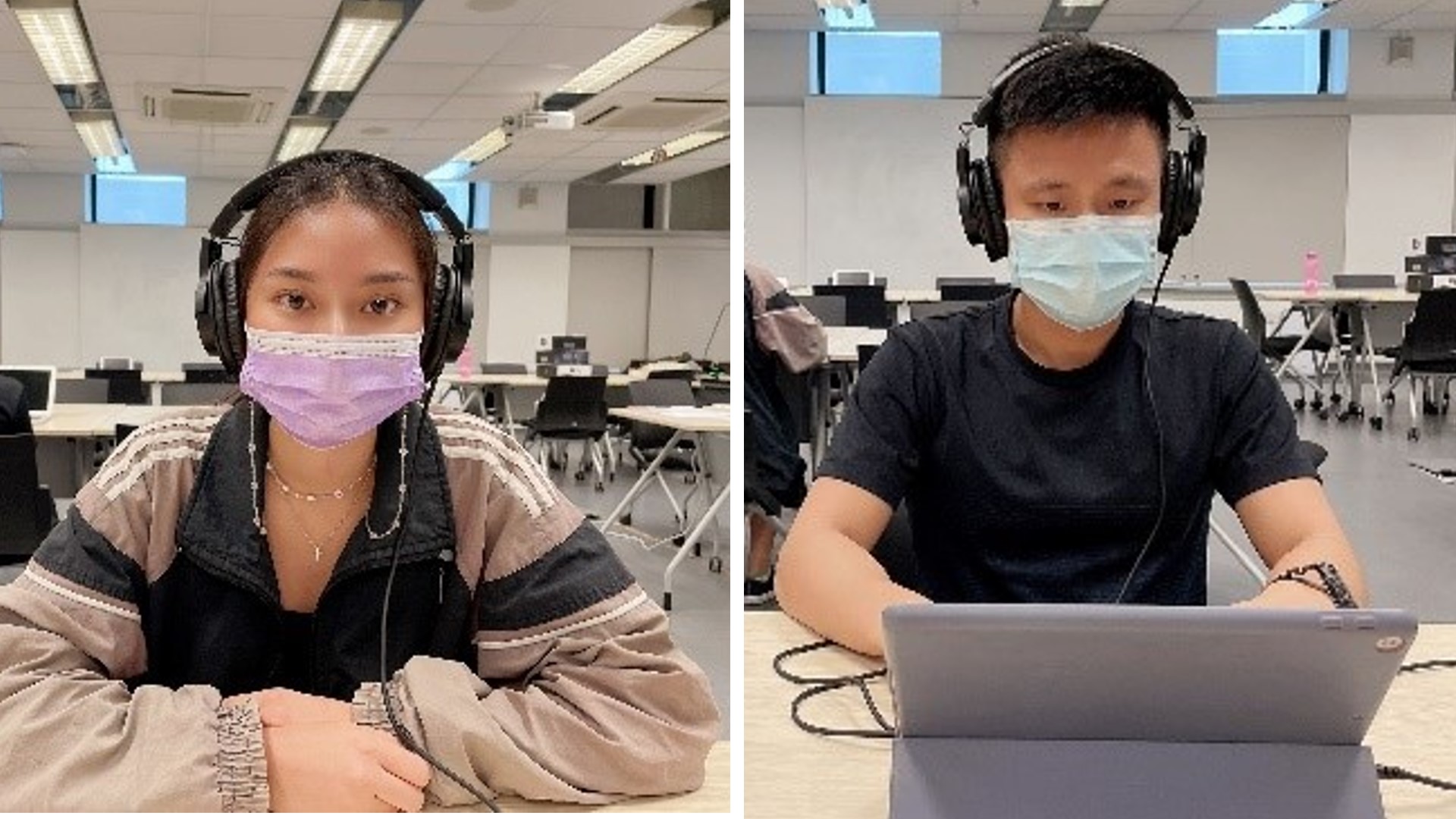
Year 4 honours students from the occupational therapy programme, Fidessa Ng and Bradley Lam assisted with the data collection for the study. Here, they are demonstrating how participants listened to the audio during the experiment.
Impact of Cultural Background or Music Preference
In the study, Asst Prof Tay found that participants who listened to TENG’s music with binaural beats reported that they were more likely to listen to Chinese music to relieve stress-related studying, compared to those who listened to TENG’s music without binaural beats.
When played on its own, binaural beats are made up of two tones of different frequencies played to each ear concurrently, and the impact is indifferent to cultural background or music preference.
He elaborated, “However, certain binaural beats soundtracks, like ours, incorporate binaural beats in music. In our study, we incorporated binaural beats into Chinese instrumental music. As such, we could expect that individuals with a preference for Chinese and/or instrumental music would enjoy our soundtracks more.”
While the study did not specifically investigate the familiarity or appreciation for Chinese instrumental music on the outcomes, Asst Prof Tay found that whether participants listened to Chinese instrumental music, or how frequently they listened to Chinese instrumental music did not influence the findings.
He said, “We measured skin conductance, which is a physiological signal related to a change in sweat gland activity. Compared with self-reports, which are more subjective in nature, this is regarded as a reliable indicator of stress and emotional arousal and an objective measure of stress.”
SIT’s Unique Partnership with The TENG Company

The creative team of the binaural beats project at The TENG Company. (Photo: TENG Company)
This is the first time that SIT faculty has partnered an arts group in a research study. Asst Prof Tay said, “The students and I had an opportunity to learn more about music production. We also had a chance to meet and interact with the musicians at TENG and came away with an understanding of how a music company could be involved in research and education. It was a synergistic collaboration and an experience that we are not typically exposed to within the SIT campus.”
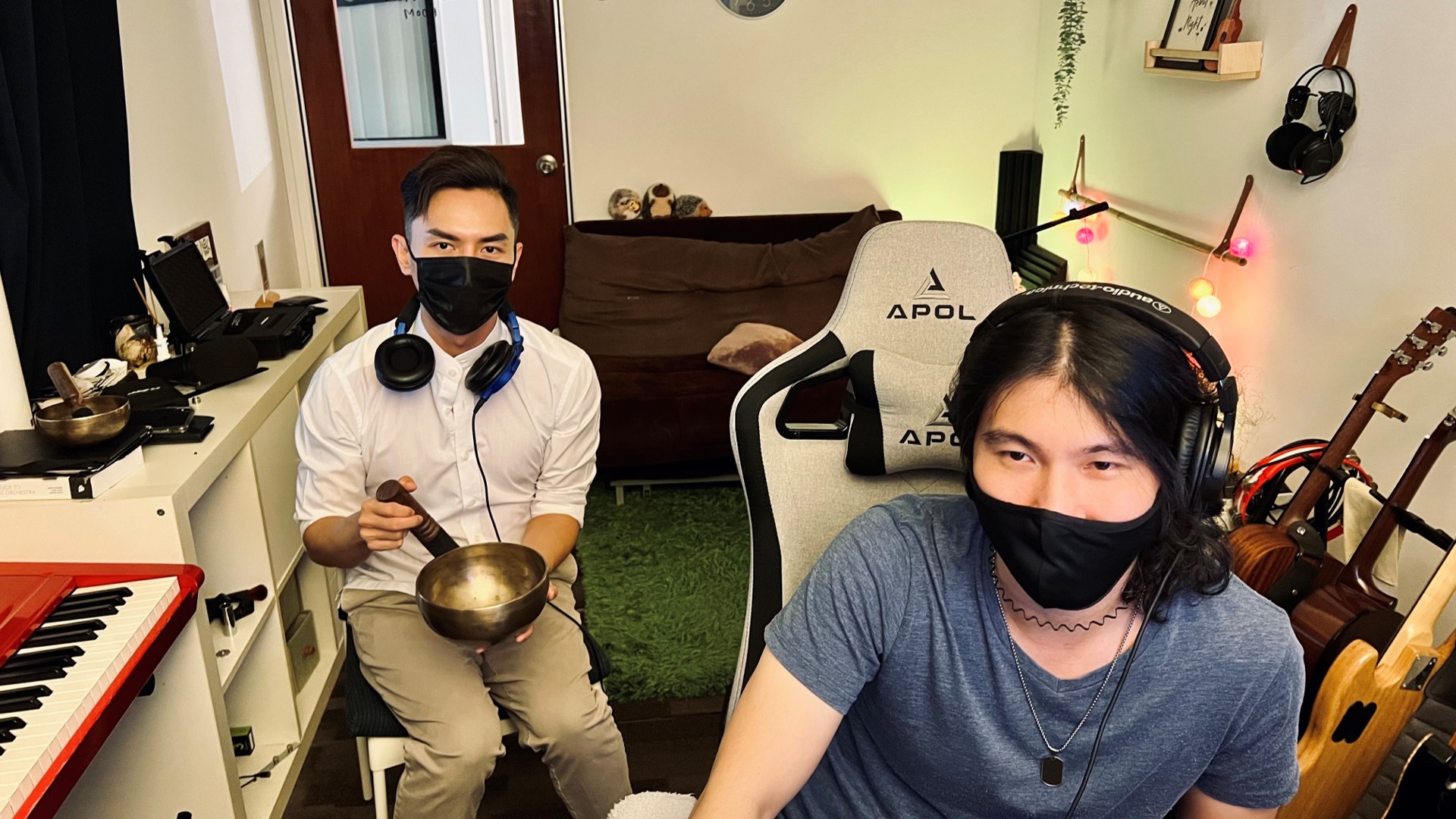
(Photo: TENG Company)
It is also The TENG Company’s first time working with a university, with support from the Singapore Chinese Cultural Centre (SCCC). Dr Wong said, “We were looking for an accredited partner to carry out this research with. After this, we hope to create a series of innovative music products that would be useful as a safe, non-pharmacological means to help people cope with stress and anxiety, or as a complement to medical forms of treatment.”


